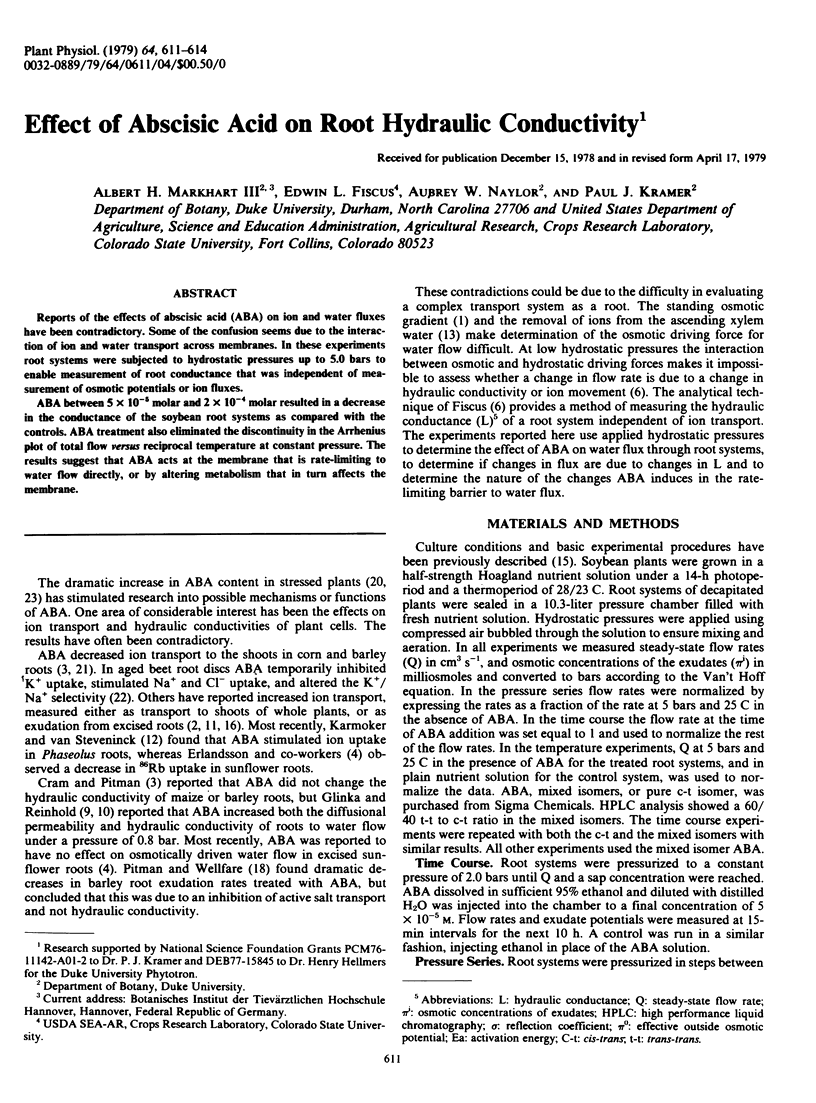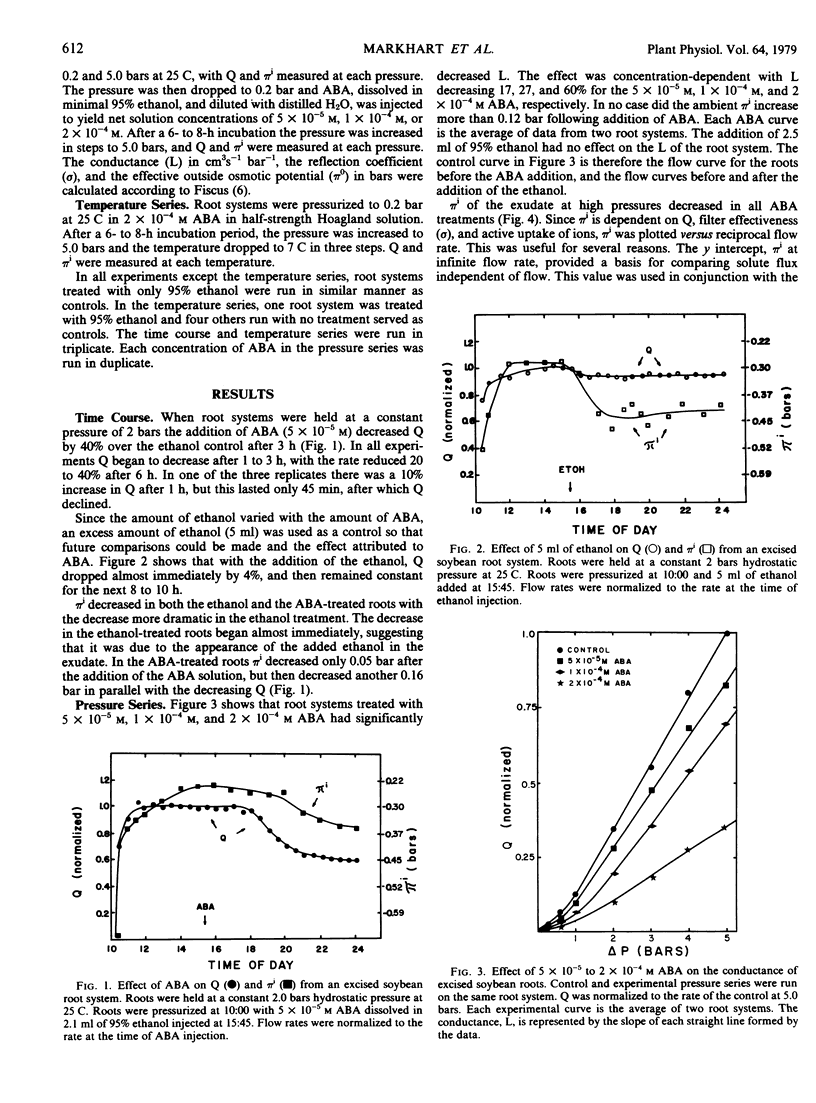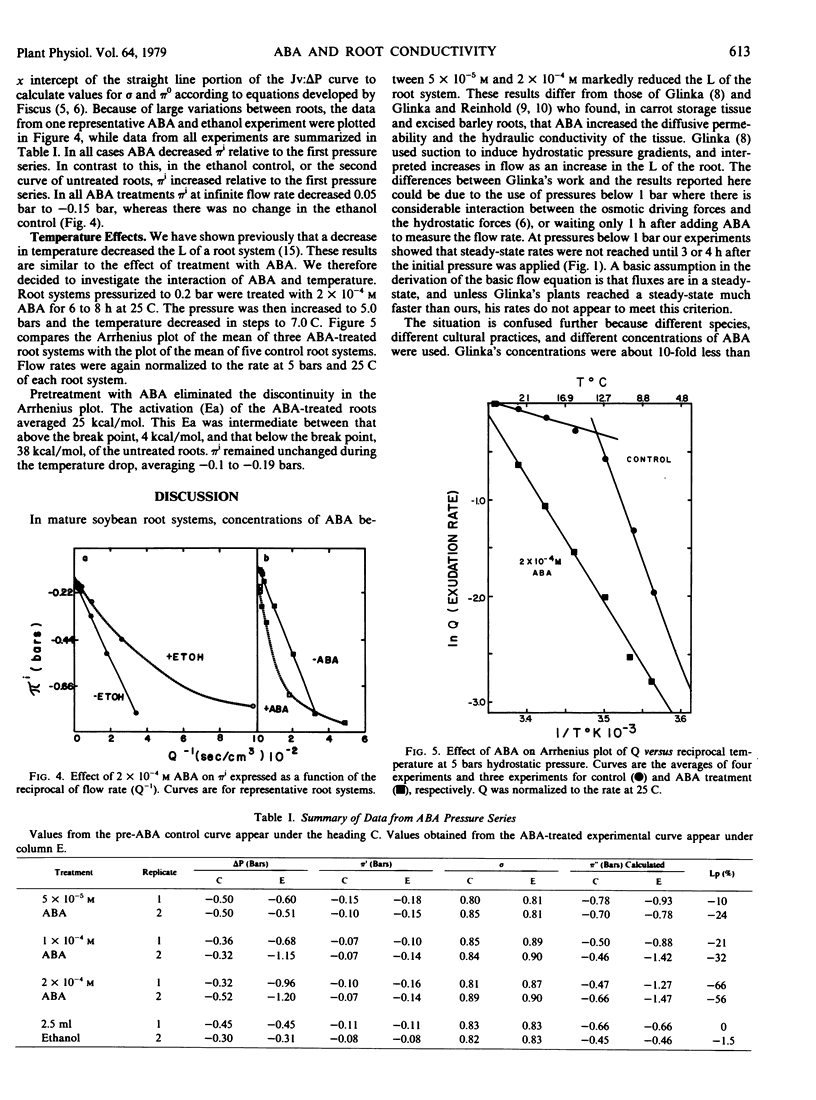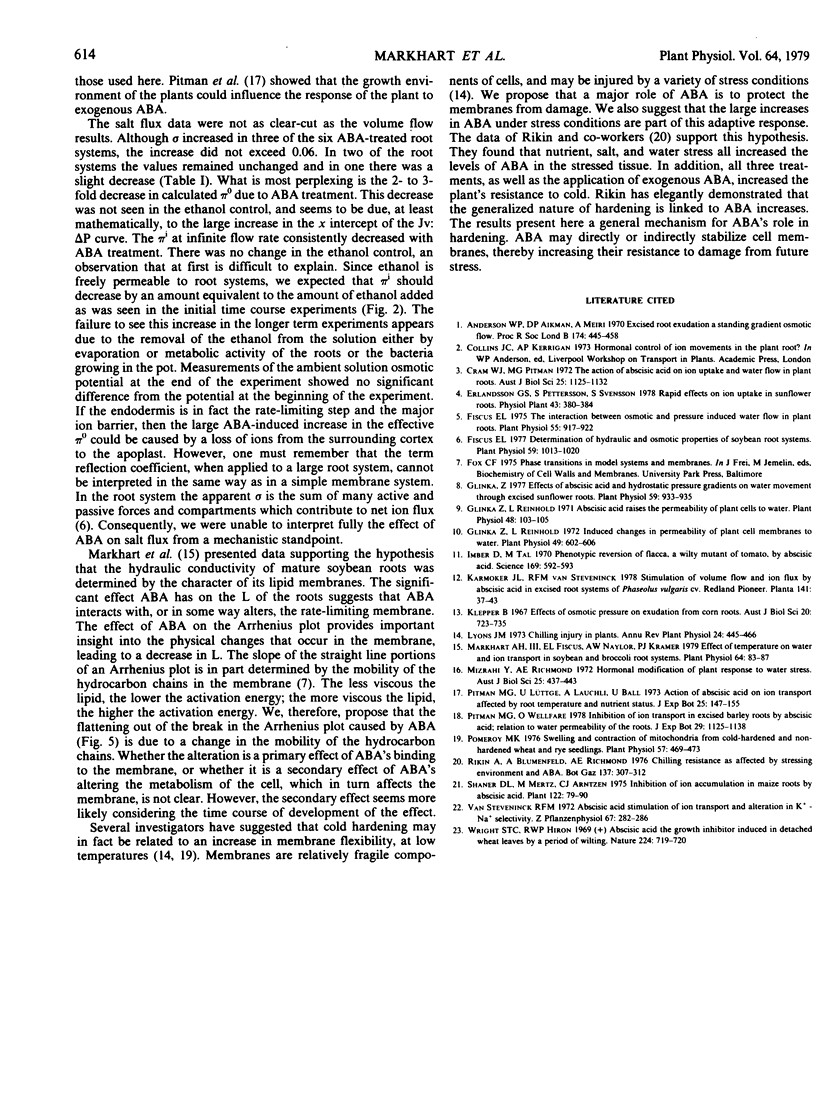Abstract
Reports of the effects of abscisic acid (ABA) on ion and water fluxes have been contradictory. Some of the confusion seems due to the interaction of ion and water transport across membranes. In these experiments root systems were subjected to hydrostatic pressures up to 5.0 bars to enable measurement of root conductance that was independent of measurement of osmotic potentials or ion fluxes.
ABA between 5 × 10−5 molar and 2 × 10−4 molar resulted in a decrease in the conductance of the soybean root systems as compared with the controls. ABA treatment also eliminated the discontinuity in the Arrhenius plot of total flow versus reciprocal temperature at constant pressure. The results suggest that ABA acts at the membrane that is rate-limiting to water flow directly, or by altering metabolism that in turn affects the membrane.
Full text
PDF



Selected References
These references are in PubMed. This may not be the complete list of references from this article.
- Fiscus E. L. Determination of hydraulic and osmotic properties of soybean root systems. Plant Physiol. 1977 Jun;59(6):1013–1020. doi: 10.1104/pp.59.6.1013. [DOI] [PMC free article] [PubMed] [Google Scholar]
- Fiscus E. L. The Interaction between Osmotic- and Pressure-induced Water Flow in Plant Roots. Plant Physiol. 1975 May;55(5):917–922. doi: 10.1104/pp.55.5.917. [DOI] [PMC free article] [PubMed] [Google Scholar]
- Glinka Z. Abscisic Acid raises the permeability of plant cells to water. Plant Physiol. 1971 Jul;48(1):103–105. doi: 10.1104/pp.48.1.103. [DOI] [PMC free article] [PubMed] [Google Scholar]
- Glinka Z. Effects of Abscisic Acid and of Hydrostatic Pressure Gradient on Water Movement through Excised Sunflower Roots. Plant Physiol. 1977 May;59(5):933–935. doi: 10.1104/pp.59.5.933. [DOI] [PMC free article] [PubMed] [Google Scholar]
- Glinka Z. Induced changes in permeability of plant cell membranes to water. Plant Physiol. 1972 Apr;49(4):602–606. doi: 10.1104/pp.49.4.602. [DOI] [PMC free article] [PubMed] [Google Scholar]
- Imber D., Tal M. Phenotypic reversion of flacca, a wilty mutant of tomato, by abscisic Acid. Science. 1970 Aug 7;169(3945):592–593. doi: 10.1126/science.169.3945.592. [DOI] [PubMed] [Google Scholar]
- Markhart A. H., Fiscus E. L., Naylor A. W., Kramer P. J. Effect of temperature on water and ion transport in soybean and broccoli systems. Plant Physiol. 1979 Jul;64(1):83–87. doi: 10.1104/pp.64.1.83. [DOI] [PMC free article] [PubMed] [Google Scholar]
- Pomeroy M. K. Swelling and Contraction of Mitochondria from Cold-hardened and Nonhardened Wheat and Rye Seedlings. Plant Physiol. 1976 Apr;57(4):469–473. doi: 10.1104/pp.57.4.469. [DOI] [PMC free article] [PubMed] [Google Scholar]


